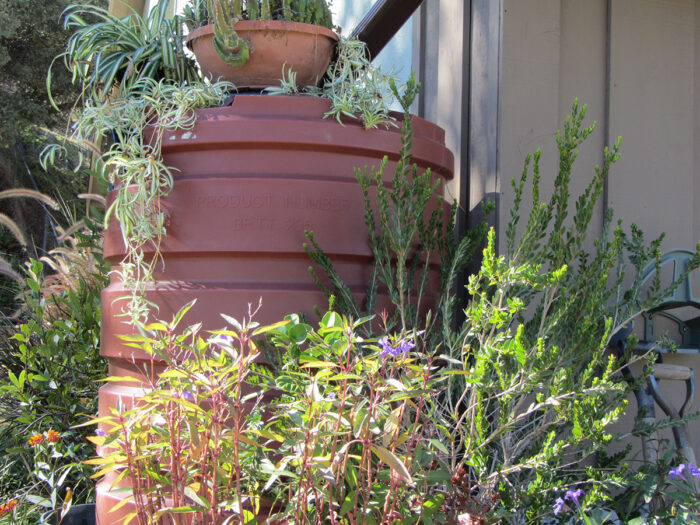
Water has become a critical consideration as our climate changes and reservoirs are drying. Some years may grace us with more rainfall than others, but the long-range view of the Southern California climate seems to offer a progressively more parched landscape.
We can actually mitigate the negative effects of weather shifts on our gardens and our lives by creating landscapes that work with, rather than resist, these changes. Just like everything else in life, changes are inevitable.
So let’s start springtime this month with rebuilding our landscapes, and designing them to become more exciting while also declaring independence from extreme weather and an increased lack of water. Integrating artistic sustainability to conserve water in the land surrounding our homes in SoCal comes with plenty of bonuses, including healthy physical exercise, emotional relaxation, inspiring beauty, and a connection with nature that is inherently healing in a world full of stress.
So where to start?
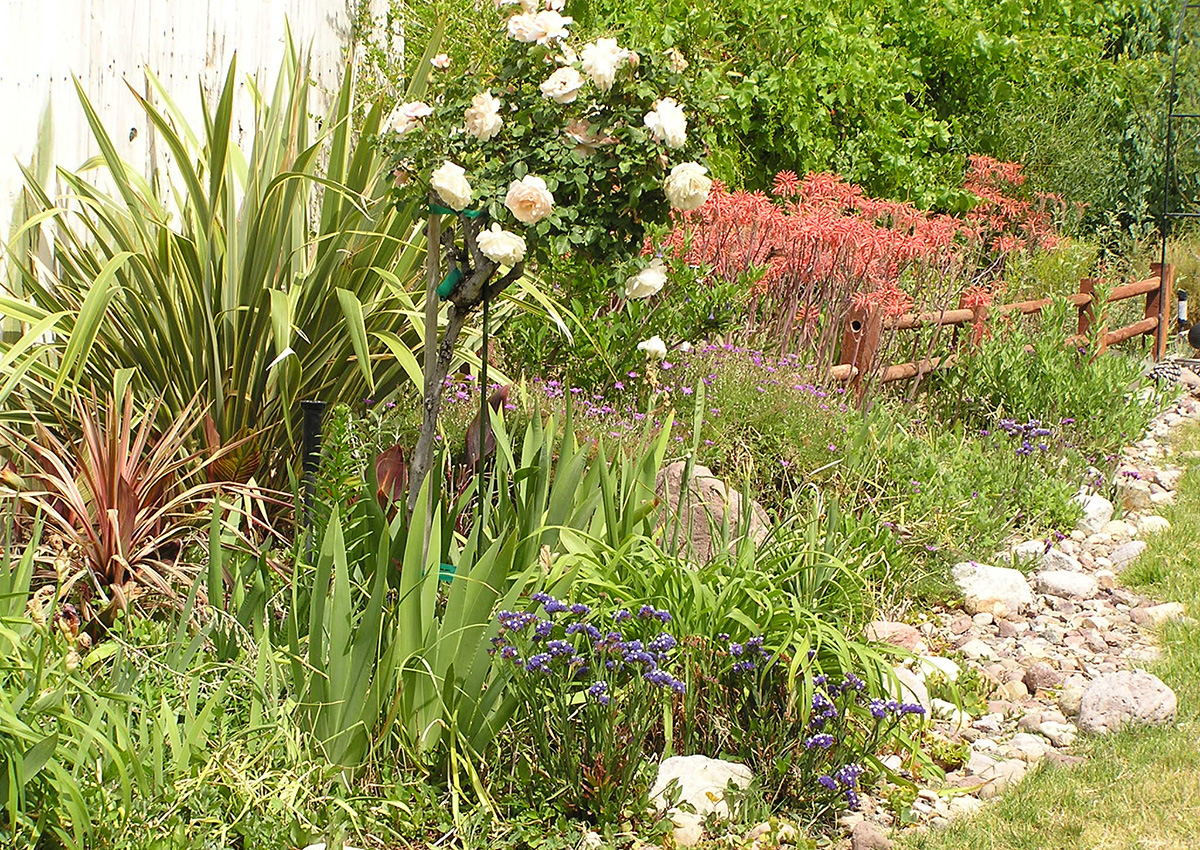
1. Begin with trapping whatever excess water becomes available
Sculpting swales or channels to conduct and conserve water in decorative containers, dual-purpose rocky areas, depressions, or flower-bed edgings allows rain and excess irrigation water to be used or reused. Start digging a depression that flows from where water naturally collects to where it needs to go.
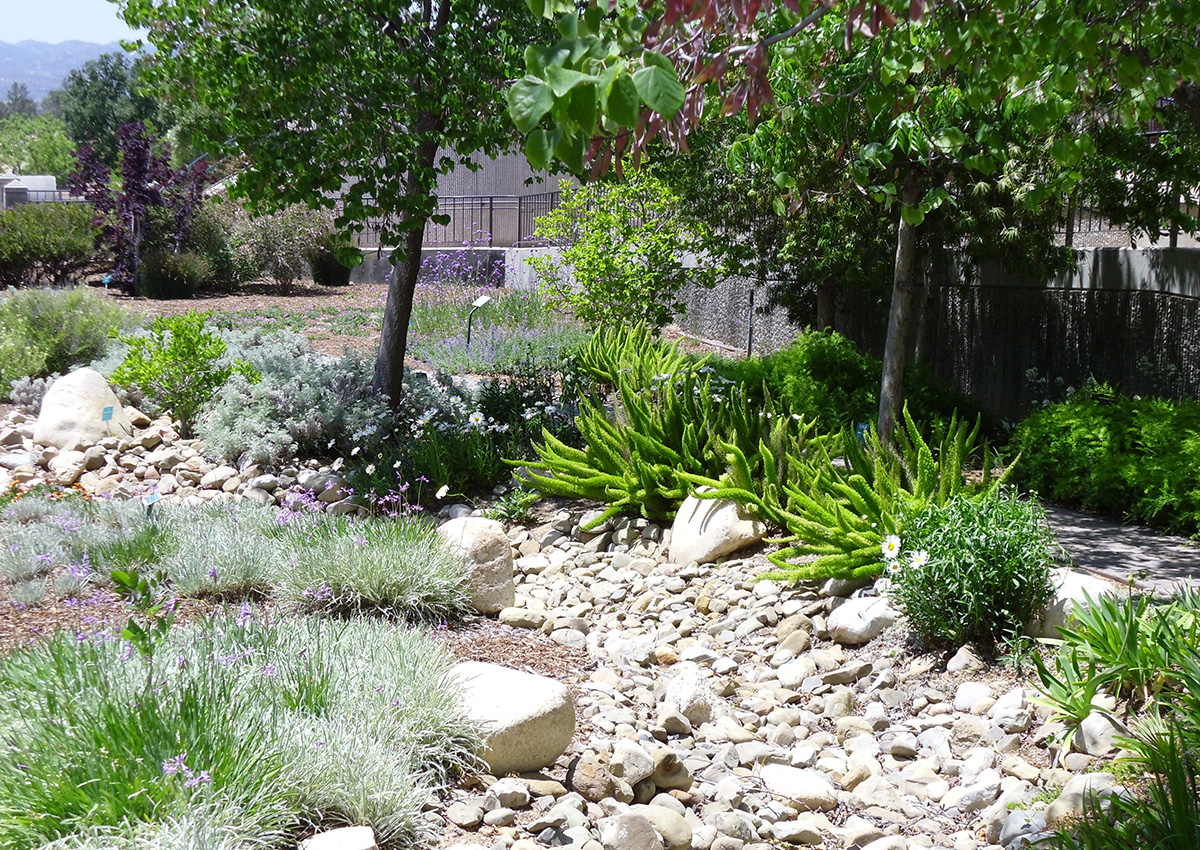
2. Direct the water to where it will be used or stored
Here’s an opportunity to turn a practical feature into an artistic statement. Consider creating and using a dry riverbed, which offers wonderful design flexibility to paint a in natural, formal, country, contemporary, quaint, or any other garden theme. Use it to channel water away from a building foundation or delicate area and into thirsty spaces or areas set up to recycle or store the precious liquid. For a natural look, allow the flow to curve and snake its way to where it will be stored. Use straight lines for geometric, formal, or contemporary designs. These water paths can be lined with weed-blocking fabric and filled with rough or decorative stone, carved into a patio, poured with sculpted cement, or created into styles and shapes that are limited only by the imagination.
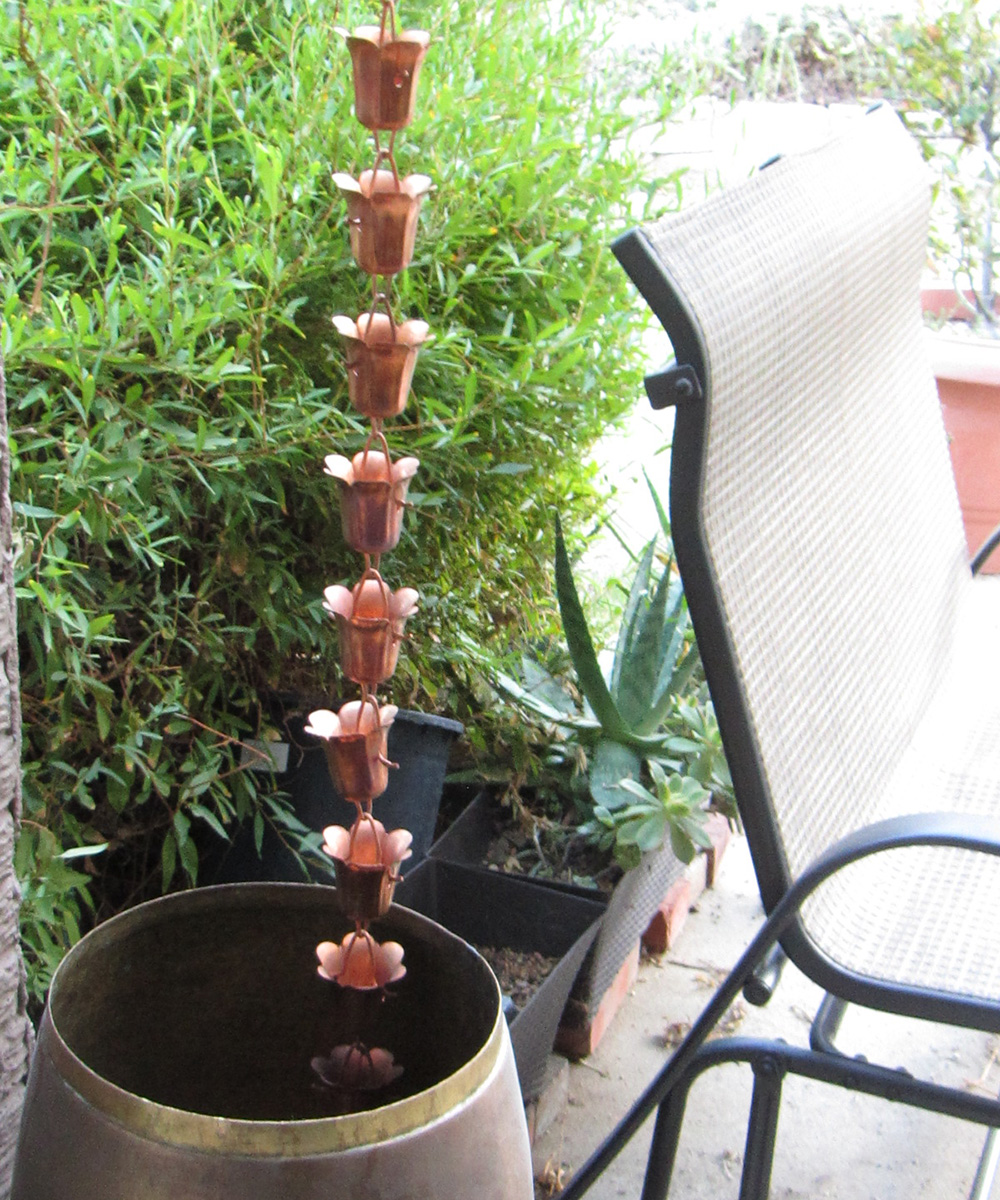
Another idea is to collect rain from gutters (add a decorative rain chain) or downspouts into tubs or decorative containers, or have it pool into landscaped culverts. Then conduct the water to wherever it is needed with underground pipelines.
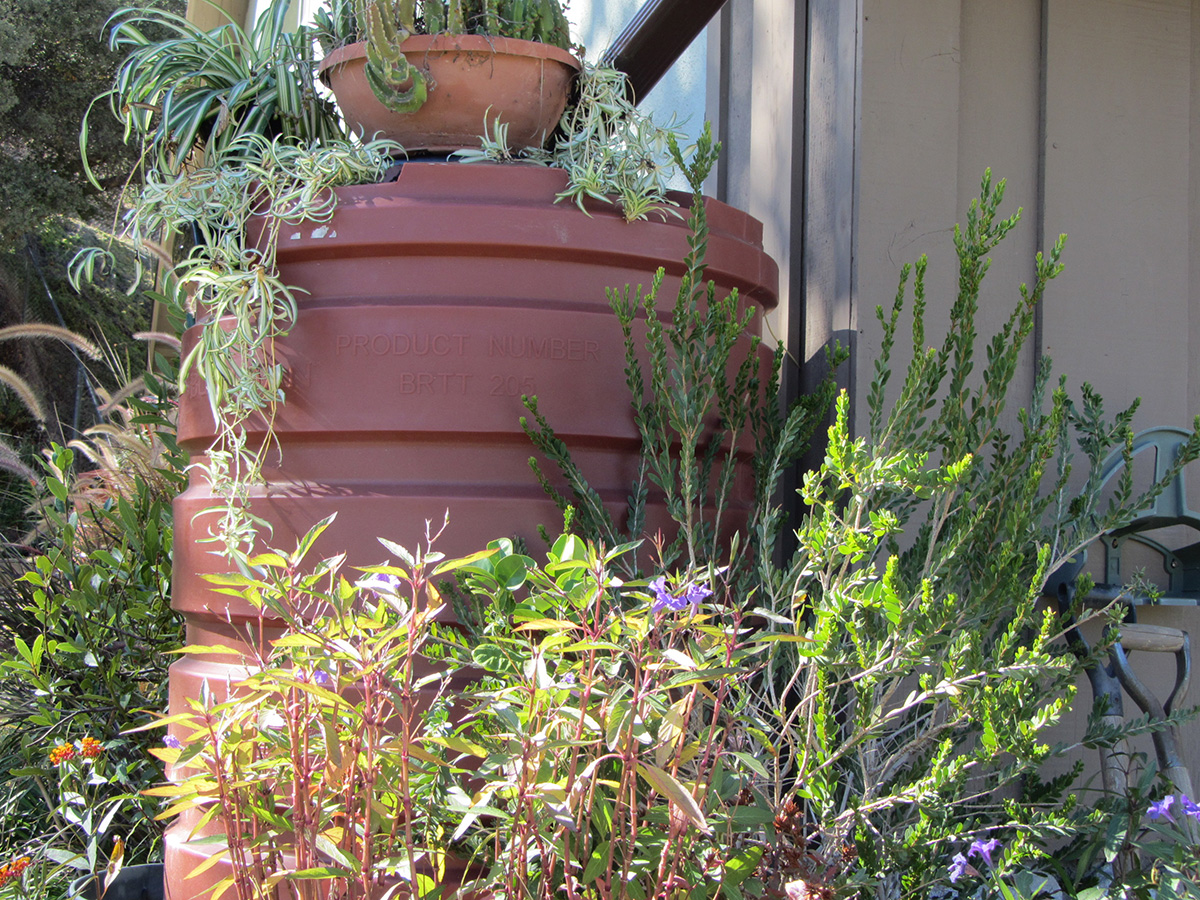
3. Store the water
Think about ways to use practical water storage as décor or artistic points of interest. Holding tanks can be bought or built. Either way they offer an opportunity for incorporating creative design elements—like painting a rain barrel unusual colors or tumbling trailing plants down the sides of the barrel from pots set on top.
Water can be stored in underground tanks with a patio of permeable paving constructed above and aerated by a fountain. Filtered rainwater is also ideal for ponds, where you can consider raising pond fish (a fun hobby) while also taking advantage of the super-rich fertilizer (the broken-down organic material that settles at the bottom of the pond), which can be removed and added to your garden plantings.
Other options are to place a fountain of recycled water in an unexpected location or to fill a cemented or rubber-lined bog area with a bouquet of water-filtering, flowering plants. Remember to add mosquito dunks (larval-killing, safe-for-people-and-animals bacteria) if there are no resident fish to keep mosquitoes from breeding.
No matter where you choose to store your water, these locations can provide an opportunity to grow water-loving plants that would not ordinarily thrive in our dry climate. With a controlled water garden, you can grow a stately lotus plant (Nelumbo spp. and cvs., Zones 4–11) or a mass of colorful flowering bog plants, or create a hypnotic, peaceful pond of waterlilies (Nymphaea spp. and cvs., Zones 3–11). These water gardens can also be topped off when needed with saved supplies in rain barrels without increasing water bills. They will also create a humidifying microclimate good for breathing and attracting birds and butterflies.
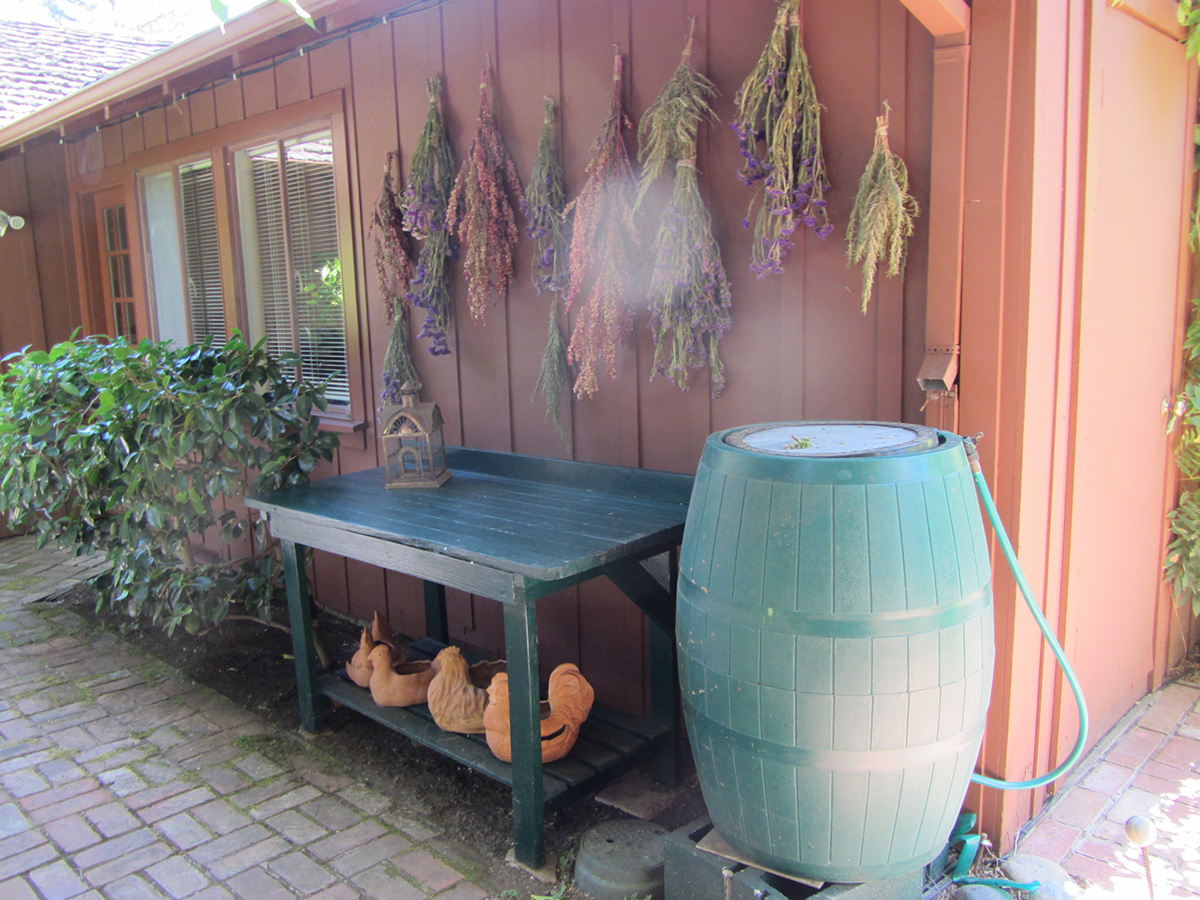
4. Share the water
While stored water can be used to create special events in the garden, it can also be shared with areas of the garden in need of extra irrigation. Most rain barrels or other manufactured holding tanks are fitted with faucets or other fittings designed for additional connectors. Do-it-yourselfers should install their own. From there, attached pipes or hoses can direct a drip irrigation system to deliver the water exactly where it is needed in the garden.
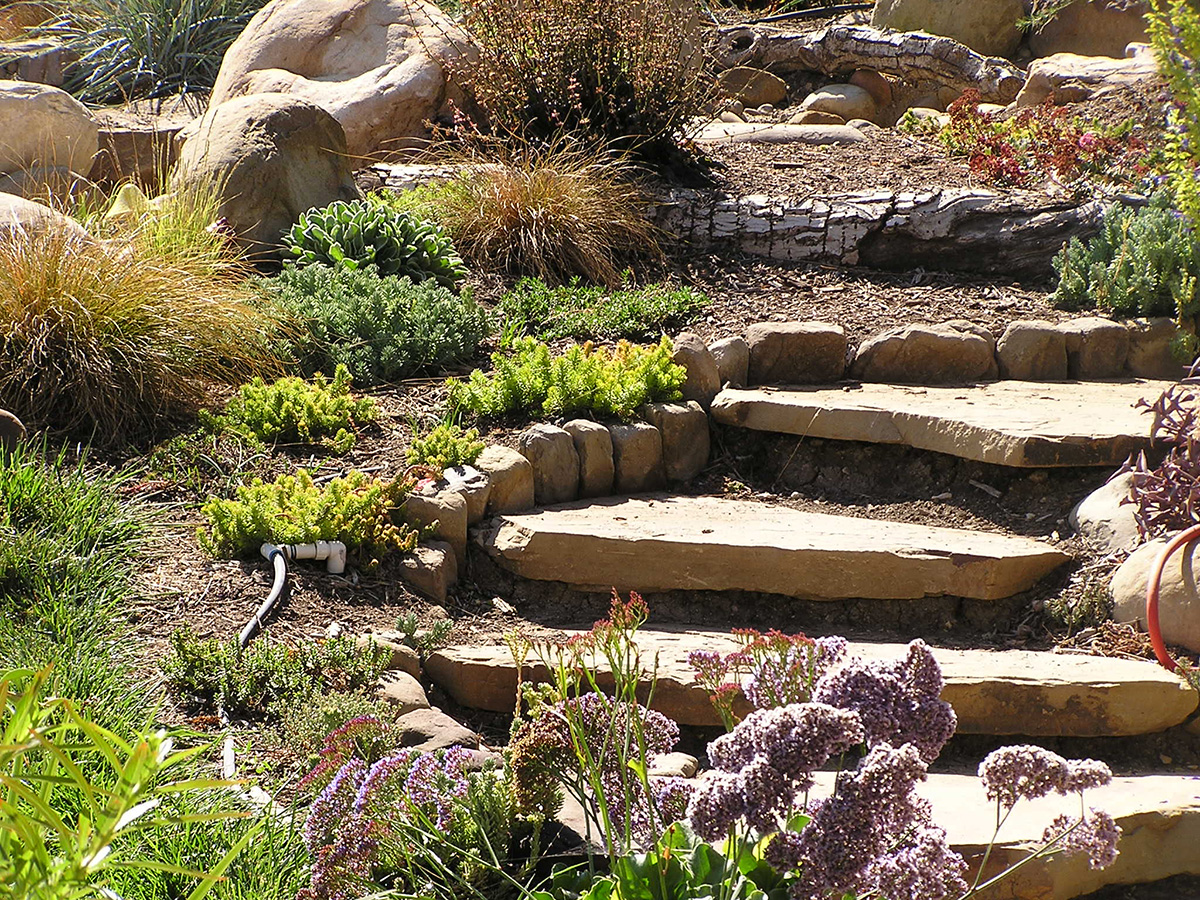
Controlling and reusing water can help irrigate dry areas, bolster wildfire resistance with greenery and firebreaks, and even help divert flooding when heavy rainfall can’t be absorbed by hard, dry ground. If we adjust our garden designs and materials to make the best of our water use now, we can surround ourselves with both sustainability and beauty. There is no time like the present to begin using recycled water to establish a new, elegant way of landscaping.
—Jane Gates is the owner of Gates & Croft Horticultural Design in Los Angeles and the author of All the Garden’s a Stage: Choosing the Best Performing Plants for a Sustainable Garden.




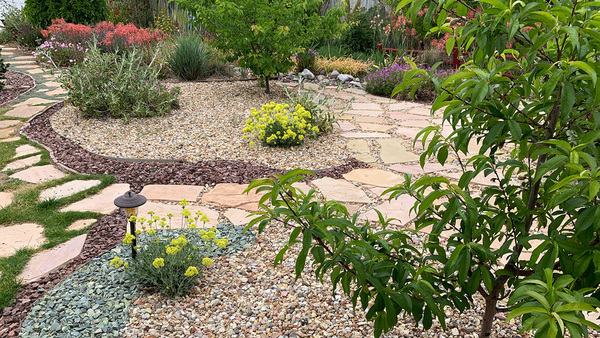













Comments
Log in or create an account to post a comment.
Sign up Log in